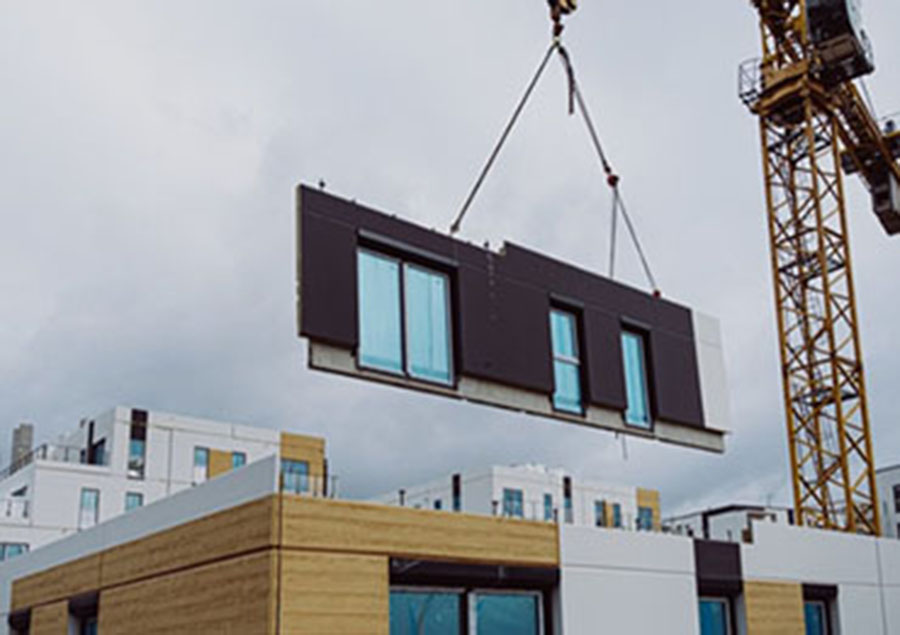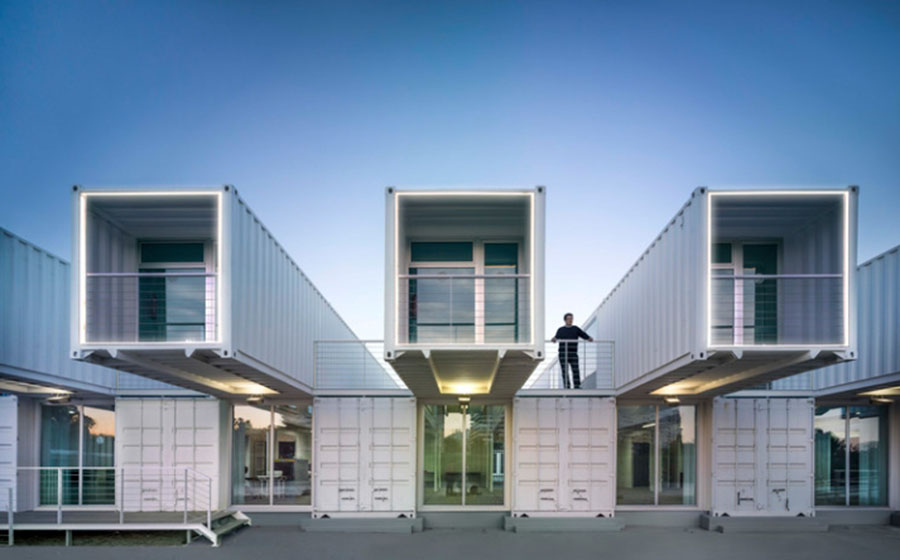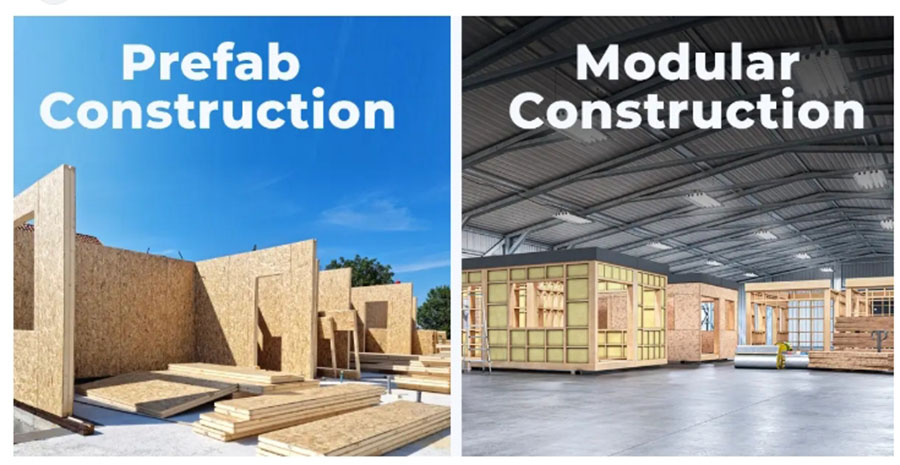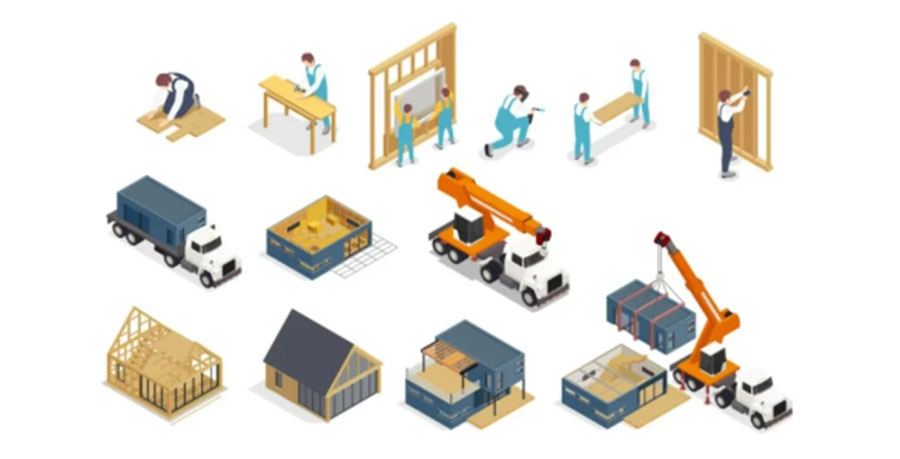
Prefab Construction
Prefab Construction is short of prefabricated construction,a building method that is becoming increasingly common in many regions of North America. Prefabricated construction refers to the manufacturing of buildings or parts of buildings in advance, which can be easily transported and assembled. This style of construction takes place in a factory environment, and it can eliminate many of the inconveniences of on-site construction, such as weather delays and safety hazards.
Although prefabricated construction is gaining more and more popularity, it is not a new method. The current common perception is that prefabricated construction is not just a passing trend. The benefits of prefabrication are starting to draw attention because the factory environment is more efficient and safer than on-site construction.

Modular Construction
Modular construction is an innovative building method that involves constructing building components, or modules, in a factory-controlled environment and then assembling them on-site. These modules are prefabricated with high precision and quality standards. They can include various parts like rooms, floors, or entire sections of a building.
The process offers several advantages. It significantly reduces construction time as multiple modules can be built simultaneously and assembled quickly. It also enhances quality control since the factory setting allows for more consistent production. Moreover, it minimizes on-site disruption and waste, making it more environmentally friendly. Modular construction is used in a wide range of projects, from residential homes to commercial buildings and even large-scale infrastructure.

Similarities and Differences between Prefab and Modular Construction
The terms prefab and modular are sometimes used interchangeably but they are not the same. Modular construction is just one type of prefabricated construction.
☆Similarities
Both do not carry out the entire construction process on the construction site, and both have the link of prefabrication in the factory.
☆Differences

Prefabricated construction refers to any construction process that does not take place on the construction site. The concept is relatively broad, emphasizing the characteristic of non-site construction.
Prefab construction, which builds things in a factory rather than on-site, is utilized in multiple construction sectors. Modular construction, a type of prefab, uses modules assembled on site to form structures. Panelized construction involves creating flat panels in a factory and installing them on site, commonly used for home building as it allows more customization than modular construction and is faster and more efficient than standard on-site home building. All prefabricated construction techniques can work with materials like timber, steel, and concrete.

Modular construction is a type of prefabricated construction. Specifically, it means building repeated parts called modules in the factory and then assembling them on site. These modules serve as functional spaces such as rooms in the building, and they are usually very similar because they go through the same factory process.
Modular construction requires careful planning as making changes and customizations becomes difficult once the process starts. Limited customization is due to the factory-based repetitive process for building modules, which makes it highly efficient for buildings with numerous identical rooms such as schools and hospitals. Common applications of modular construction include healthcare buildings, educational institutions, offices and shelters for industrial, forestry and oil workers, residential construction, and variations of prefab construction.
In conclusion, while prefabricated construction isn't a one - size - fits - all solution for every project, its growing significance in various construction sectors such as healthcare, education, and residential is undeniable. The numerous advantages it offers, including cost - effectiveness, shorter construction timelines, and enhanced safety, make it a highly attractive option. Given its potential to become the dominant construction approach in the coming years, industry professionals are well - advised to embrace this emerging trend early. By doing so, they can gain a competitive edge, maximize the benefits of prefabrication, and contribute to the evolution of the construction industry towards a more efficient and sustainable future.